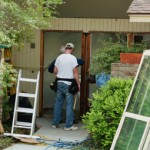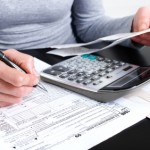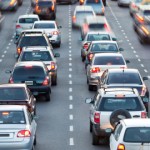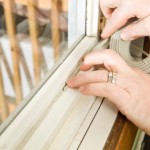
- Category:
Energy Efficiency -
Last updated:
September 8, 2021
Roundup of this month’s posts about energy efficiency
For the past month, our vice president of solar & energy efficiency sales, Michael Smith, provided a wealth of resources for homeowners that are interested in using energy more efficiently around the house. In case you missed any of them or if you’re interested in having the information all in one place, below please see a summary of what was posted throughout the month.
Qualifications for energy-efficiency grants
 Assistance is available, but you’ll have to put in the work to get it. Currently, there is no federal grant program for homeowners, unless you qualify for the Weatherization Grant Program. The U.S. Department of Health and Human Services offers the Low-Income Energy Assistance Program, which can help low-income families pay their utility bills. If you do not qualify for the previous two programs, search the Database of State incentives for Renewables and Efficiency (DSIRE) for a complete list of all the local organizations that offer energy-efficiency grants.
Assistance is available, but you’ll have to put in the work to get it. Currently, there is no federal grant program for homeowners, unless you qualify for the Weatherization Grant Program. The U.S. Department of Health and Human Services offers the Low-Income Energy Assistance Program, which can help low-income families pay their utility bills. If you do not qualify for the previous two programs, search the Database of State incentives for Renewables and Efficiency (DSIRE) for a complete list of all the local organizations that offer energy-efficiency grants.
For businesses and inventors, there’s a bit more opportunity. If you’ve invented or can advance an energy-efficiency technology, we suggest you look into the DOE grant administered by the Office of Energy Efficiency & Renewable Energy (EERE). The EERE works with various types of institutions to increase the use of renewable energy and energy efficiency technologies. The US Department of Agriculture also offers grants to agriculture producers and rural small businesses. Also, check out a full list of federal grant opportunities at www.grants.gov.
Financing a green lifestyle: Finding mortgage and home-improvement loans
 As of February 17, the Energy Star rebate program, which purchased $258 million worth of rebated products, ended. However, if you’re still in the market to make your home more energy-efficient, there are still financing programs available.
As of February 17, the Energy Star rebate program, which purchased $258 million worth of rebated products, ended. However, if you’re still in the market to make your home more energy-efficient, there are still financing programs available.
According to the EnergySavers website, there are two different types of mortgages that are available through a government-insured or conventional loan program:
- Energy-efficient mortgages assist those buying new, already-efficient homes. This type of loan allows borrowers to qualify for larger loan amounts and potentially a better, more efficient home.
- Energy-improvement mortgages assist those who wish to purchase or refinance a home that isn’t currently energy efficient. Borrowers will likely carry a slightly higher mortgage payment, due to the energy-improvement costs, but would potentially be erased by lower ongoing energy costs.
Please note that you will need to have an energy rating performed on your new or existing home to qualify for the above financing programs. This evaluation will analyze your home and provide a rating to lenders, which will demonstrate how energy efficient your home is when compared with similar homes.
For an updated list of additional financing opportunities that are available in your community, visit the Database of State Incentives for Renewables and Efficiency.
Financing a green lifestyle: Navigating the tax-credit labyrinth
 Tax-credits are available for those who decide to “go green,” but you first need to figure out which of your green products qualifies you for a tax credit.
Tax-credits are available for those who decide to “go green,” but you first need to figure out which of your green products qualifies you for a tax credit.
A complete list of products that grant you energy credit eligibility, through 2016, can be found at the U.S. Department of Energy’s (DOE) EnergySavers website. These products must be installed in your home by 12/31/16, with the exception of geothermal pumps. You can get a tax credit for plug-in electric cars as long as you’re one of the first 200,000 vehicle owners. It’s also worth noting that you can only claim a tax credit once and would apply to the year that you purchased the eligible product. Additionally, if you installed new heating and AC systems, insulation, a new roof, and windows in ’09 and/or ’10, but didn’t take the tax credit for those upgrades, you may have missed out on up to 30% of what you spent. Our advice is to amend your tax filings now. Usually, you’ll be able to go back up to three years. For more information, you can check out the IRS website or consult your tax accountant for the proper forms.
For a complete list of tax incentives in your community, you should visit the Database of State Incentives for Renewables and Efficiency.
Energy efficiency on the road
 Since late December, average drivers are spending an extra $4/month to fuel their cars. Consider these pointers that could potentially yield big savings.
Since late December, average drivers are spending an extra $4/month to fuel their cars. Consider these pointers that could potentially yield big savings.
- Drive sensibly: Rapid acceleration and hard braking can increase fuel usage by up to 33% on highways and 5% around town. To save fuel, accelerate slowly and get into high gear as soon as possible.
- Note posted speeds: Mileage typically decreases quickly at speeds above 50 mph.
- Avoid excessive idling: Idling can burn a quarter to a half-gallon of fuel/hr. When parked, turn off your engine to save fuel.
- Remove excessive weight: Every extra 100 lbs could reduce your mpg by up to 2%.
- Use the right fuel: Premium fuels aren’t designed for every car. Many cars function better on regular, low-octane gas.
- Regularly service your vehicle: Poorly tuned engines can use up to 50% more fuel. Also, mind the amount of air pressure in your tires. By having the correct air pressure, your tires wear longer, save fuel, enhance handling, and prevent accidents.
Learn more on this topic at www.fueleconomy.gov.
Summer home energy efficiency tips
 There are a variety of energy-efficient ways that customers save money during the hot and costly summer months. As a reference, any product that has earned the “Energy Star” label will likely save you energy and costs on your utility bills.
There are a variety of energy-efficient ways that customers save money during the hot and costly summer months. As a reference, any product that has earned the “Energy Star” label will likely save you energy and costs on your utility bills.
Additionally, we recommend utilizing the following simple, low-cost techniques:
- Cook with the microwave: It takes two-thirds less energy than your stove.
- Open windows at night: If you live in a safe, cool area, then allow Mother Nature to cool your home and save your AC usage. In the morning, close the windows, drapes, and blinds to capture that cool air. If using venetian blinds, angle them upwards in order to reflect the light upwards.
- Only use ceiling fans when you’re in the room: Ceiling fans efficiently cool-off people, but not rooms.
- Use the “sleep” feature on your computer, scanner, fax, and printer: Or, create a power station on a power strip for your chargeable electronics. Turn off the strip when it’s not in use.
- Use the bathroom fan when showering: This will remove the heat and humidity. A laundry room is also a great place for spot ventilation.
Other quick energy saving tips: line-dry your clothing, only run the dishwasher when full, take short showers and eliminate baths.
What it means to be energy efficient
 The “super derecho” that struck regions from northern Indiana to the Southern mid-Atlantic coast underscored our dependency on energy and how fragile the supply grid can be. In extreme weather, the benefits of being energy efficient become more obvious. Energy efficiency is defined as, “using less energy to provide the same service.” A survey by the U.S. Energy Information Administration (EIA) indicated that more efficient furnaces, AC units, and major appliances have championed the downward trend in average residential energy consumption of the last 30 years. Energy efficiency is the cheapest and most plentiful form of new energy on the market. We recommend that you read www.energysavers.gov/seasonal/pdfs/stay_cool-fs-energyinfo.pdf and check out the websites that can let you know the costs and usage of energy within your community.
The “super derecho” that struck regions from northern Indiana to the Southern mid-Atlantic coast underscored our dependency on energy and how fragile the supply grid can be. In extreme weather, the benefits of being energy efficient become more obvious. Energy efficiency is defined as, “using less energy to provide the same service.” A survey by the U.S. Energy Information Administration (EIA) indicated that more efficient furnaces, AC units, and major appliances have championed the downward trend in average residential energy consumption of the last 30 years. Energy efficiency is the cheapest and most plentiful form of new energy on the market. We recommend that you read www.energysavers.gov/seasonal/pdfs/stay_cool-fs-energyinfo.pdf and check out the websites that can let you know the costs and usage of energy within your community.




